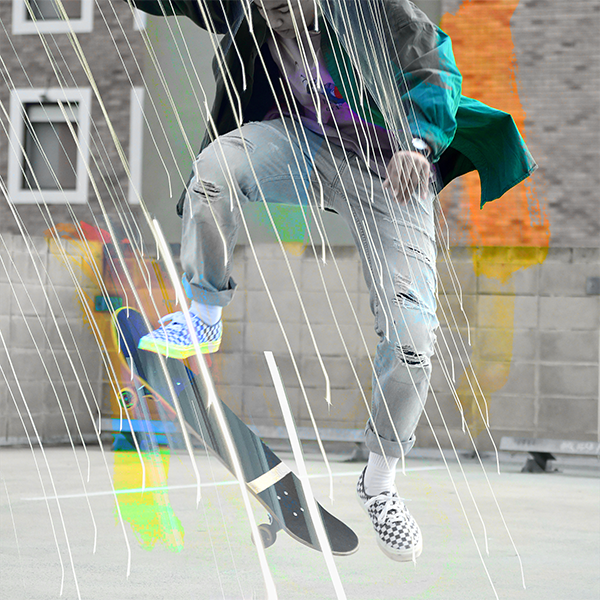Like a Warrior…Like a Woman in Labor (Isaiah 42)
The images of warrior and of woman in labor are commonly understood as representing gender opposites. But in Isaiah 42 we find them together, lines away from each other, to describe YHWH. Like a woman in labor, Brueggemann tells us, YHWH is about to stop their silence, about to unleash a creative force that will transform the world.
It is often the case that male descriptions of the Godhead are taken as normative while female images are taken as an anomaly to be studied; as sparking a debate regarding the gender of God. Yet, as Coakley argues, the Spirit transgresses these binaries. The triune God is expressed in terms both female and male and yet beyond these two in the new creation under Christ.
This insistence on representing God as male while silencing God’s feminine aspects had a deep impact in my development as a woman.
I grew up in South America, a place fraught with paradoxical gender dynamics. Although women did not enjoy as much privilege as men, we definitely had all the responsibility. The trick, we were told, was to have men believe they ruled so that they would let us do our thing—important things like showing up at work, paying bills, and taking care of children. The implication was that men were some kind of afterthought; they would eventually leave following the charm of a younger skirt. We women should be prepared. I still remember my literature teacher telling us, on the fifth grade, that we girls should study and get a career so that we would not be left broke and with five children to feed when our eventual husbands ran away with their admin assistant. All this was very much in line with the narrative of the male fragile ego of machismo, and the superior status of the suffering woman found in marianismo.
God, although ‘male,’ was different. ‘He’ was perfect, loving, safe, omniscient, and omnipresent. The only way to make sense of this God who was perfect despite maleness, was to engage in quite a feat of dualistic thinking. God’s maleness mattered only insofar as his male privilege to be God, but not to this character. With a male God, a male Jesus, and a Mary I was not supposed to pray to, I was left with no place to look for inspiration.
Within these dynamics and especially under the paradigm of male authority within the Church I became estranged from my own womanhood [Tweet This]. I was taught that sanctification meant a denial of my flesh in favor of a dualistic spirituality.
And then, I bore a child.
This event had massive implications not only for my self-understanding as a woman, but also for my theology.[1] How was it possible that a God who was male, as suggested by all authoritative voices, would have designed the birthing process in such way? Further, how come Eve, the crown of creation, would be deemed as a mere temptress and Adam as the main character of the story?[2] Although I intellectually knew better, cultural representations of gender have a deep impact in the way we objectify experiences from our flesh.
Thankfully, birthing opened my awareness to my body as subject[3] in such powerful ways that a whole new set of meanings of womanhood was bore along with my child.
Birthing is commonly represented as some lowly, painful, errand that belongs in the domestic realm, so painful that women must be protected from the suffering it causes by way of powerful painkillers.[4] Not so much.
I had the privilege to give birth at home, and by a great gift of destiny, I did it without a midwife. During labor I did not feel vulnerable but powerful. The imagery in my head was not one of despair but of fun and powerful stuff, like ancient warriors preparing to run into battle. The pain was a source of inspiration to release my body to do its job. I embraced it and connected with aspects of myself that were unknown to me—physical strength, resilience, rawness, bravery, and utter joy.
When my son was born, which was very quickly, I felt a deep sense of accomplishment. The three of us, my husband, my son, and I, had partnered together to bring life into this world. We did it; and I felt badass. Like a warrior…like a woman in labor.
Unlike the rosy representations I had been exposed to, I found motherhood to look more like the work of a loving warrior than a feminine task in the most obnoxious, sexist, essentialist sense. I learned that feminine is more akin to deep strength than to whatever sexist people think it is about. Furthermore, motherhood in its deep strength resembles the image of the warrior mother God who sings lullabies as described in Zepheniah 3:17, ‘The Lord your God is with you, the Mighty Warrior who saves. He will take great delight in you; in his love he will no longer rebuke you, but will rejoice over you with singing.”
Breast milk is war paint.
—
[1] I would like to acknowledge the can of worms that is opened each time we talk about women and childbirth. I take childbirth to be one of the many wonderful things a woman can do and not the defining event in an essentialist sense. Not everyone is called to motherhood and motherhood does not make one a woman. [2] To be sure, a video from Tim Keller’s talk from The Gospel Coalition depicts Adam and Eve in this fashion: he, the protagonist, is tempted by her. See minute 1:18 at http://thegospelcoalition.org/blogs/justintaylor/2010/08/26/the-bible-is-not-basically-about-you/ [3] In the sense of Merleau-Ponty. [4] This is the way Piper characterizes childbirth. Clearly, he has never given birth: http://www.desiringgod.org/blog/posts/how-are-women-saved-through-childbearing [Image Source]


